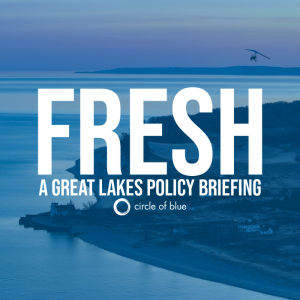Federal Water Tap, April 17: BLM Proposes Elevating Land and Water Conservation
The Rundown
- A BLM proposal puts land and water conservation on the same level as mining and grazing.
- The Interior Department outlines options for Colorado River water supply cuts.
- A federal judge blocks the Biden administration’s Clean Water Act definition in 24 states.
- A watchdog agency assesses the Interior Department’s progress on abandoned oil and gas wells.
- The U.S. Geological Survey evaluates its stream gauge network.
- The EPA considers designating more PFAS as hazardous substances.
And lastly, the Senate Agriculture Committee will hold a hearing on conservation programs in the farm bill.
“We urge the President to wake up and listen to the call from the majority of Congress Members, Senators, and the states for maintaining reasonable limits to the federal government’s regulatory power.” — Statement from Reps. Sam Graves (R-MO) and David Rouzer (R-NC) after a federal judge blocked the implementation of the Biden administration’s Clean Water Rule in 24 Republican-led states. The rule defines which water bodies are covered by federal pollution mandates. Congress passed a resolution to invalidate the rule, but President Biden vetoed it in early April. A vote in the House to override the veto is expected this week.
By the Numbers
7: Number of PFAS the EPA is considering designating as hazardous substances under the federal law that governs Superfund sites. The seven would be in addition to PFOA and PFOS, which the EPA officially proposed as hazardous substances last September.
News Briefs
Potential Cuts on the Colorado River
The Biden administration unveiled a pair of short-term options to sustain water levels in key Colorado River reservoirs in the next three years.
The options could reduce water deliveries to the lower basin states of Arizona, California, and Nevada by as much as a quarter combined next year and even more in 2025 and 2026.
The potential cuts were outlined in draft form. A big question must be answered before the plan is finalized. How will the cuts be distributed among the states?
One option is based on historical priority. This favors California, which has some of the oldest, most secure rights to water from the river. The other gives each of the three states the same percentage of the cuts. This is more palatable to Arizona and Nevada.
The draft plan is open for public comment for 45 days. After that, the federal government will choose its preferred option, which could be a blend of the two alternatives. A final decision is expected before August.
In context: Biden Administration Outlines Options for Colorado River Emergency Plan
BLM’s Conservation Priorities
The Bureau of Land Management, which oversees more than 245 million acres of public lands, is proposing a larger role for land and water conservation.
The proposal would update the Federal Land Policy and Management Act to elevate conservation to equal status along with mining, grazing, and other land uses. It also includes conservation leases, a new tool for restoring degraded lands.
“This proposed rule is designed to ensure that the nation’s public lands continue to provide minerals, energy, forage, timber, and recreational opportunities, as well as habitat, protected water supplies, and landscapes that resist and recover from drought, wildfire, and other disturbances,” the Federal Register notice states.
Studies and Reports
Orphaned Wells Program Update
According to a report from its watchdog agency, the Interior Department lacks data on groundwater or surface water contamination from abandoned oil and gas wells.
The federal infrastructure bill provided $4.7 billion to the department to plug and remediate abandoned wells. Tracking data on water contamination is mentioned in the bill but is not a requirement.
Stream Gauge Needs Assessment
The U.S. Geological Survey completed an evaluation of its national stream gauge network, finding that additional data should be collected.
Through stakeholder surveys and meetings, the USGS concluded that data on precipitation, water temperature, and stream imagery would enhance the value of the network. Plus, data is needed to support water rights management, reservoir operations, and ecosystem health.
PFAS Toxicity Review
The EPA’s IRIS program published a final version of its toxicity review of PFHxA. The chemical is part of the PFAS family of chemicals.
On the Radar
Farm Bill Conservation Hearing
The Senate Agriculture Committee will hold a hearing on April 20 to discuss conservation programs in the farm bill. Sara Porterfield, western water policy advisor for Trout Unlimited, will testify, as will Joseluis Ortiz y Muniz, leader of an irrigation system in New Mexico.
Federal Water Tap is a weekly digest spotting trends in U.S. government water policy. To get more water news, follow Circle of Blue on Twitter and sign up for our newsletter.
Brett writes about agriculture, energy, infrastructure, and the politics and economics of water in the United States. He also writes the Federal Water Tap, Circle of Blue’s weekly digest of U.S. government water news. He is the winner of two Society of Environmental Journalists reporting awards, one of the top honors in American environmental journalism: first place for explanatory reporting for a series on septic system pollution in the United States(2016) and third place for beat reporting in a small market (2014). He received the Sierra Club’s Distinguished Service Award in 2018. Brett lives in Seattle, where he hikes the mountains and bakes pies. Contact Brett Walton






Leave a Reply
Want to join the discussion?Feel free to contribute!